Lindsay Lohan wants you to know that she's all right. Reminiscing about the series of scandals that have sullied her name and nearly deep-sixed her career, she is all contrition. "When I look back on this last year, it's like what was I thinking?" she confided in this month's issue of Harper's Bazaar. "I've learned so much, though, like learning to live my life a different way."
No need to take her word for it. Images speak persuasively, and in the case of Lohan, who appears this month inside Bazaar and on its cover, they do what they can to counter the perception that she is a train wreck, yesterday's news.
The cover, shot by Peter Lindbergh soon after Lohan's third round in rehab for alcohol abuse, makes her look as if she had spent the last 12 months thriving on yoga and a diet of sprouts.
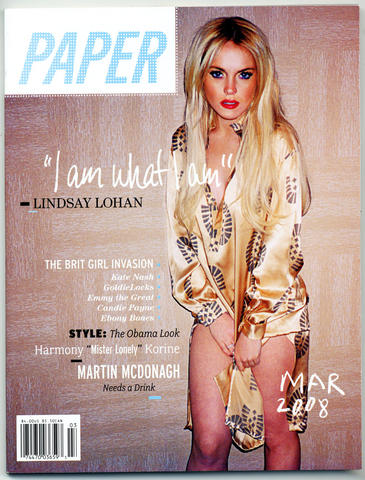
PHOTO: NY TIMES NEWS SERVICE
It is the most sophisticated of a trifecta of magazine covers this month to feature the troubled star - including a near-nude shot by Bert Stern for New York magazine's spring fashion issue and a provocative pose for Paper, the alternative style monthly. Together the covers represent a full-court press by Lohan and her handlers to reposition her as fresh-faced and comeback-ready.
She is the latest Hollywood celebrity to seek to overcome scandal through the redemptive power of glossy fashion imagery. Last June, six months after her arrest for drunken driving, Nicole Richie modeled on the cover of Bazaar with Paris Hilton. In September, not long after Britney Spears' first go at rehab and her divorce from Kevin Federline, she vamped for Allure, the beauty magazine. Drew Barrymore, Vogue's current cover girl, first graced the magazine's front in 2005 when many readers still recalled her years of drug abuse.
"A cover on Vogue or Bazaar, I think of it as the new celebrity rehab," said Liz Rosenberg, the publicist for Madonna. "Some people go to Utah," she said, a reference to the Cirque Lodge detox program, where Lohan was treated. "Others go to Smashbox and do a photo shoot."
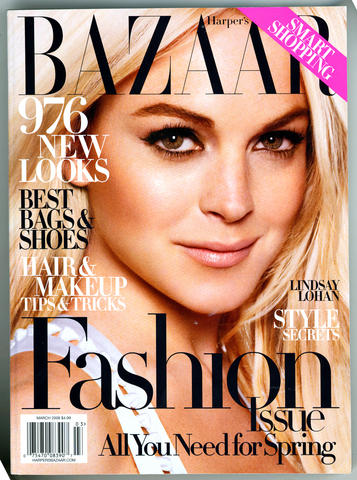
PHOTOS: NY TIMES NEWS SERVIC
The audience for such makeovers is not just the ticket-buying public. The glamorous covers are also aimed at movie directors and executives - a very high-end head shot. "A person in a position to greenlight a movie project might say, 'Oh, I guess she's turning her life around,'" Rosenberg said.
That is Lohan's hope, her publicist, Leslie Sloane Zelnik, acknowledged last week. "Her appearance on Bazaar is part of a strategic repositioning," she said. It is an attempt to recast the actress as the pulled-together antithesis of the bad girl who was scolded in 2006 by a producer for failing to show up on the set of Georgia Rule.
"Right now I just want to find a great script, a great role," Lohan said in this month's issue of Paper. She is shooting Dare to Love Me, a movie about a tango star, but has not completed a movie since starring last summer in the horror film I Know Who Killed Me, which flopped.
"Fashion can put a calm, fresh and vital face on a recovering soul," said Sally Singer, the fashion features director for Vogue. "Some people can appear on a cover and suddenly seem relevant again."
Lohan, 21, looks mature and confident on the cover of Bazaar. Such a laboriously constructed image, thanks to makeup artists and digital retouchers, is meant to serve as a corrective to the awkward, sometimes ugly celebrity candids in tabloid weeklies. "As a publicist, I would be high-fiving myself for getting Lindsay Lohan on the cover of Harper's Bazaar," said Chris Miller, Barrymore's manager and publicist. "It tends to smooth out that edge and negate when she's on the cover of Life & Style."
He added that it can eventually translate not just to film roles but to advertising contracts. Barrymore, who wrote directly to Anna Wintour, the Vogue editor, to campaign for a cover in 2005, according to Miller, is the current face of Gucci fine jewelry and the latest face of CoverGirl cosmetics. "That first cover was a power tool in putting her out there," Miller said.
More than a talk show appearance or a stroll along the red carpet, a magazine photo shoot, with its army of enablers to select the right clothing and makeup, casts a performer in the best light. "It's a safe atmosphere where the star has some control of her image, her words and the fashion that she is putting out there," Sloane Zelnik said.
Winona Ryder must have thought so. Last August, five years after a humiliating trial and conviction for shoplifting, she was persuaded by Vogue's editors to pose for the cover. It was Singer's job to reassure her. "Before the shoot I told her, 'You can show your face to the world in the context of clothes in which you look beautiful,'" she recalled. If an actress is hoping to dust herself off after a fall, she added, "this is a good way to do it."
Of course it also pays returns for the magazines, as scandal-craving readers snap up the issues, which often promise a star's first on-the-record account of her troubles. And if the interview is anodyne - or even nonexistent - there are always the pictures. Lohan's Marilyn Monroe-inspired striptease for New York was the magazine's biggest selling issue of the past four years, a company spokeswoman said.
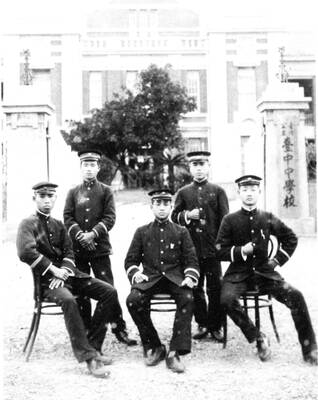
April 28 to May 4 During the Japanese colonial era, a city’s “first” high school typically served Japanese students, while Taiwanese attended the “second” high school. Only in Taichung was this reversed. That’s because when Taichung First High School opened its doors on May 1, 1915 to serve Taiwanese students who were previously barred from secondary education, it was the only high school in town. Former principal Hideo Azukisawa threatened to quit when the government in 1922 attempted to transfer the “first” designation to a new local high school for Japanese students, leading to this unusual situation. Prior to the Taichung First
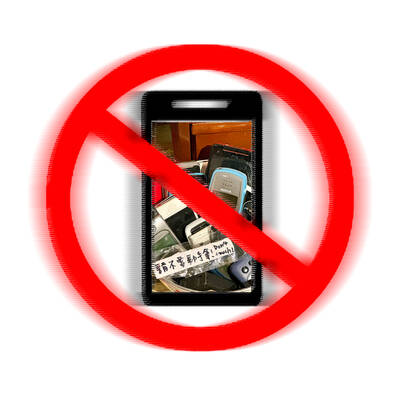
The Ministry of Education last month proposed a nationwide ban on mobile devices in schools, aiming to curb concerns over student phone addiction. Under the revised regulation, which will take effect in August, teachers and schools will be required to collect mobile devices — including phones, laptops and wearables devices — for safekeeping during school hours, unless they are being used for educational purposes. For Chang Fong-ching (張鳳琴), the ban will have a positive impact. “It’s a good move,” says the professor in the department of
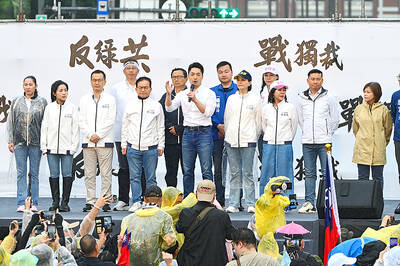
On April 17, Chinese Nationalist Party (KMT) Chairman Eric Chu (朱立倫) launched a bold campaign to revive and revitalize the KMT base by calling for an impromptu rally at the Taipei prosecutor’s offices to protest recent arrests of KMT recall campaigners over allegations of forgery and fraud involving signatures of dead voters. The protest had no time to apply for permits and was illegal, but that played into the sense of opposition grievance at alleged weaponization of the judiciary by the Democratic Progressive Party (DPP) to “annihilate” the opposition parties. Blamed for faltering recall campaigns and faced with a KMT chair

Article 2 of the Additional Articles of the Constitution of the Republic of China (中華民國憲法增修條文) stipulates that upon a vote of no confidence in the premier, the president can dissolve the legislature within 10 days. If the legislature is dissolved, a new legislative election must be held within 60 days, and the legislators’ terms will then be reckoned from that election. Two weeks ago Taipei Mayor Chiang Wan-an (蔣萬安) of the Chinese Nationalist Party (KMT) proposed that the legislature hold a vote of no confidence in the premier and dare the president to dissolve the legislature. The legislature is currently controlled